Tinker Trays
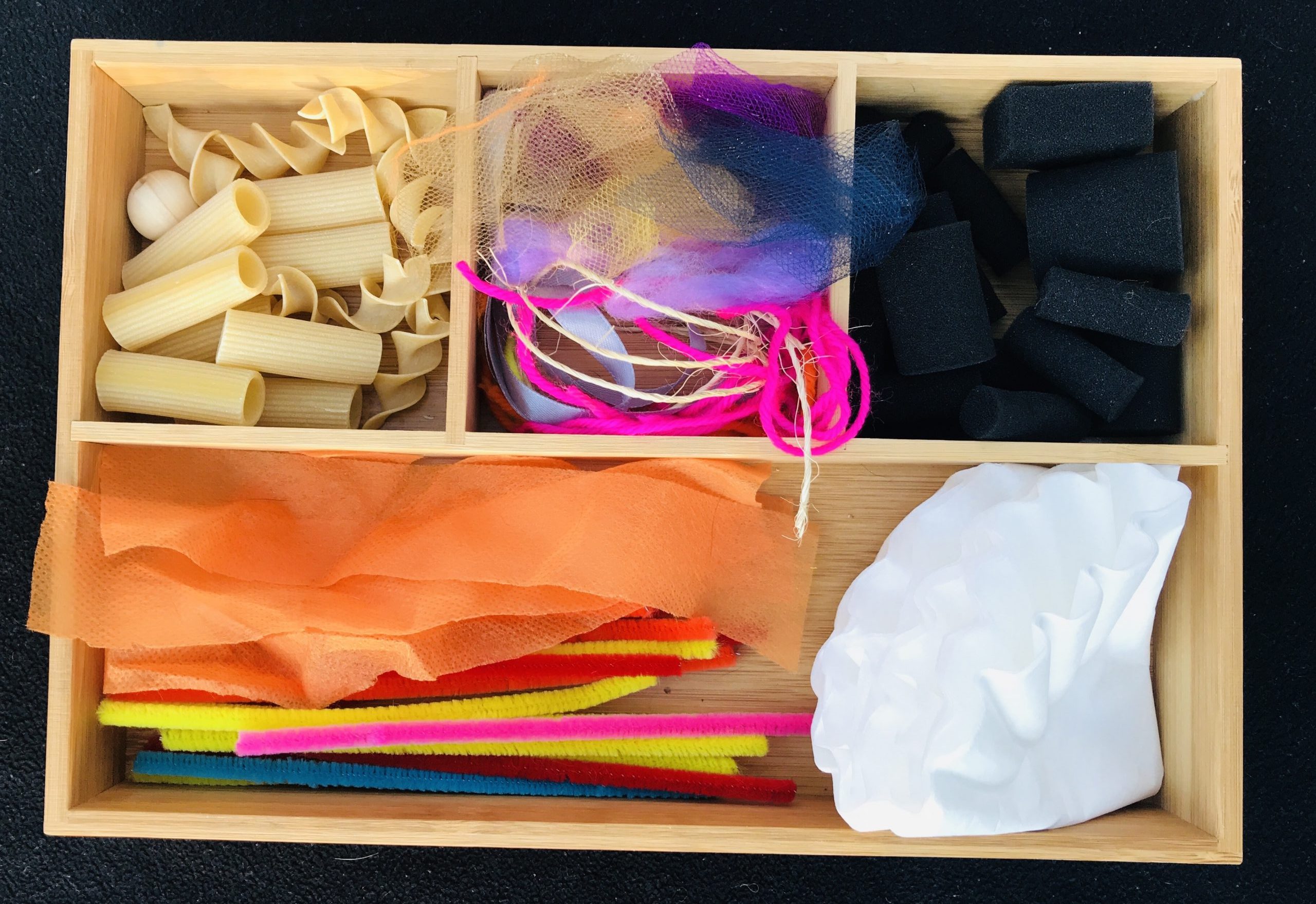
Looking for an alternative to screen time? A formula for sustained play? Meet the tinker tray. Much more than a vessel of materials, tinker trays encourage loosely structured, open-ended play while developing fine motor skills, creativity, and imagination. Read on for our best tips on setup and use.
Time: 5–10 minutes (setup); 20+ minutes (playtime)
Best for ages: 3+
Tinker Trays can be utilized by multiple ages, making them great for families to do together. For younger children, only include small items if an adult will be supervising or joining in the play.
MAKE IT!
It only takes five to ten minutes to set up a tinker tray. Better yet, there are endless possibilities for how materials are mixed and arranged. And, you won’t have to spend much money (or any at all), as recycled and reused objects make some of the best options for tinkering!
Aside from the convenience, there is significant educational value to this type of play:
- Kids of all ages can easily get absorbed in creative play and making. The same tinker tray can be used meaningfully by a three-year old and a nine-year old. Younger and older children will simply utilize the materials differently. A three-year old might arrange, stack, or pull apart materials. A nine-year old will engage in more sophisticated making, such as building a standing structure.
- Tinker trays build confidence and problem-solving ability. There are no steps to follow and no instructions for how to use the materials. This open-ended approach allows kids to try different actions, failing sometimes, but ultimately persisting until they make something that “works.”
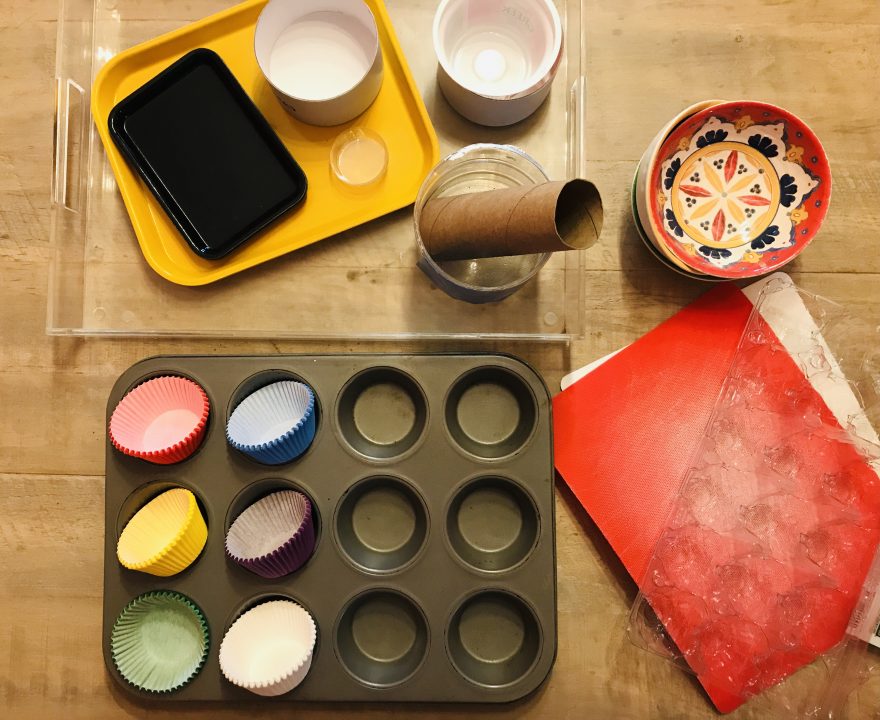
Following are our basic guidelines for stocking your studio so you can successfully assemble a tinker tray at a moment’s notice. We’ve included some example tinker trays to inspire you.
- Set aside trays and other containers. A tray creates a clear physical workspace for the child, keeping the play (and the mess) contained. For the best results, we recommend a mixture of the following:
- Rimmed trays in a few sizes. The rims prevent spills and keep materials on the tray. Tip: Wash and reuse plastic or styrofoam food trays for a free and eco-friendly option.
- A tray with partitions for holding different types of materials, like the wooden one pictured below (Loose and Bendy materials tray). Utensil drawer organizers, washed egg cartons, and cupcake tins also work great for this purpose.
- Smaller bowls or containers to hold materials. Tip: Save small food containers (such as plastic condiment cups, small carryout containers, and metal tea tins) for tinker trays.
- A medium or large plexiglass mirror can make a great surface for creative play, if you have one. Mirror sheets can also be purchased for a small amount at most craft stores.
- A play mat is helpful if playdough or salt dough is part of the tinker tray, as it will help keep your table clean.
- Take inventory of existing materials, and store a mix of the following in ziplock bags, shoe boxes, or small bins.
There’s no need to buy expensive materials or purchase everything on this list. Recyclables and loose odds and ends often make the best supplies!
Aim for a range of materials with different properties, such as:
- Sturdy Materials: cardboard, cardstock, popsicle sticks, wood scraps, corks
- Materials that can tie or attach things: string, rope, ribbon, fabric scraps
- Materials that bend: wire, pipe cleaners, aluminum foil, paper, paper clips (Note: for younger children, we recommend using coated wire for their safety.)
- Squishy or stretchy materials: packing peanuts, cotton balls, rubber bands, produce nets
- Hollow materials: straws (cut smaller to make beads), pasta tubes, large beads, cheerios (other food items or candies with holes)
- Loose parts: dry beans, dry pasta, beads, buttons, pebbles and rocks, nuts and bolts
- Shiny materials: foil, polished stones, play gems or rhinestones
- Play dough or Salt Dough (recipe at link)
- Pay attention to the child’s interests. Observe the child at play. Be careful just to watch, and not interrupt or suggest.
What types of activities does your child enjoy? For example, some children enjoy stacking or arranging materials. Some children enjoy more messy tactile experiences, such as drawing with markers or squishing clay. Some children enjoy building and connecting materials.
What interests does your child have? Perhaps your child is recently interested in colors, shapes, or animal figures.
Use these observations to inform materials you include. The more interesting your child finds the materials and their possibilities, the longer and more immersive the play will be.
- Assemble a tinker tray. Choose 3–5 different types of materials to arrange together. By choosing materials with different properties, you increase the potential for play. But don’t overdo it! If you put too many items out, the child might be overwhelmed and lose interest.
Here are some of our favorite combinations.
Lines and Shapes
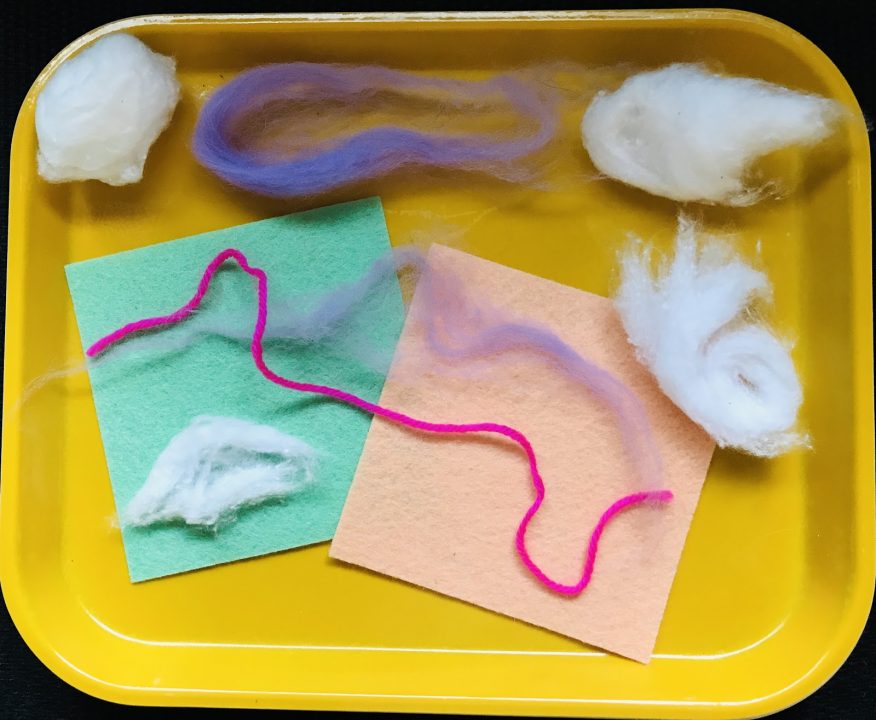
Simple, effective, and minimal mess. This tinker tray uses felt squares (substitute scrap fabric or make a felt board), string, cotton balls, and purple wool roving. We’ve also added in some wool roving for color.
With this tinker tray your child might:
- Explore how a string can be transformed from a straight line to a wiggly or zigzag line. You might also use string to create shapes and forms.
- Stretch and pull apart cotton balls and wool roving.
- Layer the materials into a three-dimensional creation.
- If your child enjoys imaginative play, consider adding felt or paper cutouts of people or animals to turn this into a storytelling opportunity.
Loose and Bendy Materials
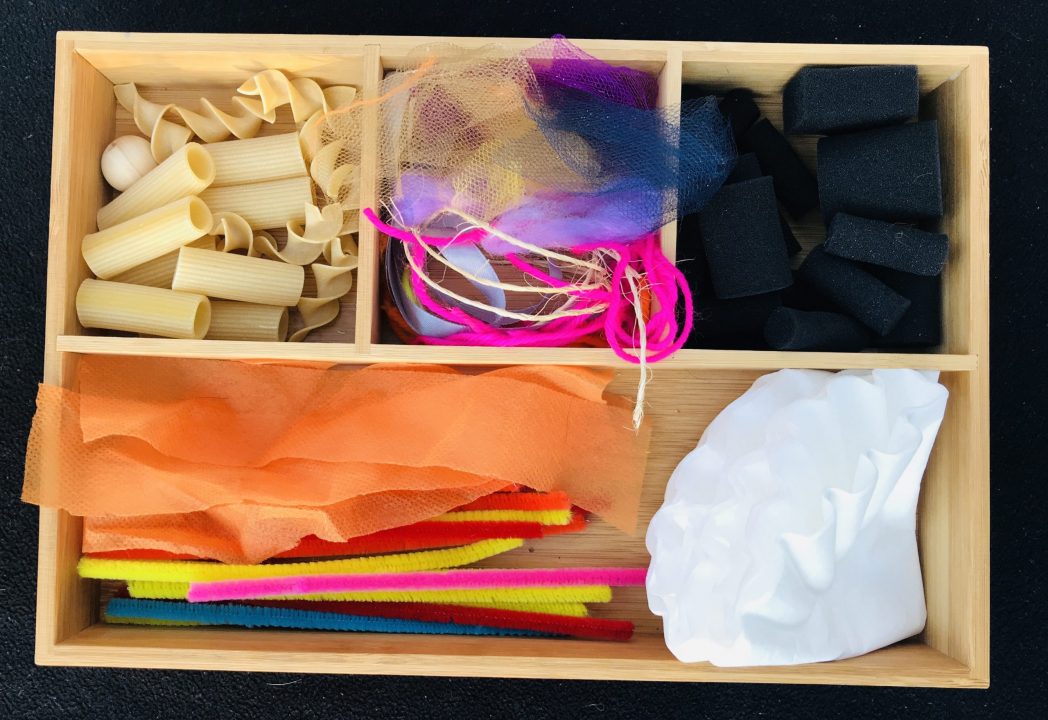
This tinker tray is all about possibilities, while also being low on mess. All items are dry and easy to clean up.
String, wire, and big pieces of cut fabric create lots of possibilities for tying and attaching materials together. Hollow pasta tubes and squishy foam packaging inserts have similar shapes, but different properties, aiding the child in some fun discovery and exploration.
With this type of tray, your child might:
- Get really tactile and put the pasta tubes on all their fingers or wrap the pipe cleaners around a finger to create a spiral.
- Link items together, stringing pasta, connecting multiple coffee filters or parts.
- Squish the packaging inserts or explore how string or pipe cleaners can cinch them and change their shape.
- Make a 3D standing structure.
Tip: Experiment with altering materials before adding to the tinker tray. For example, these coffee filters have a hole cut into the center of each filter (see image). Pipe cleaners and string can be pre-cut to different lengths.
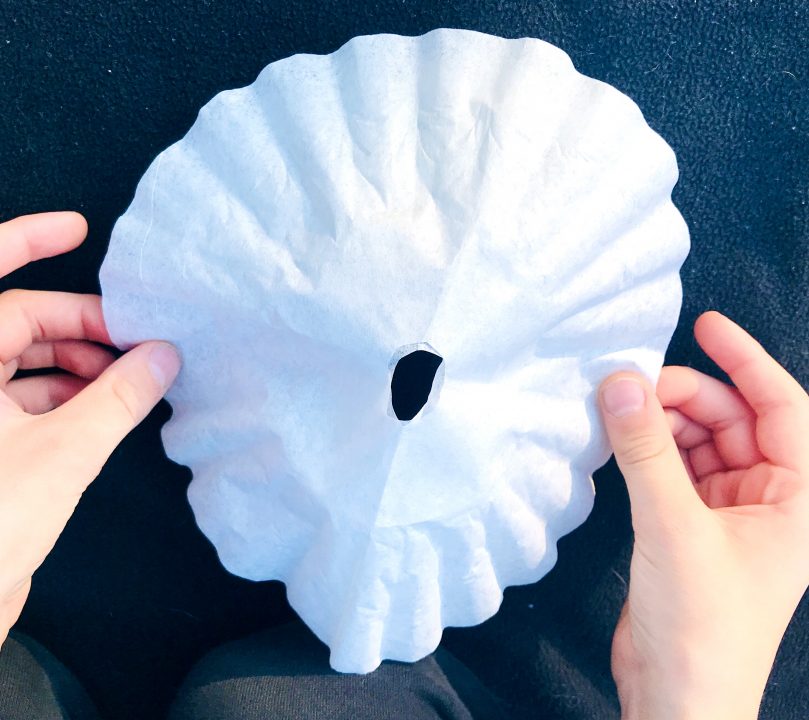
Natural Materials
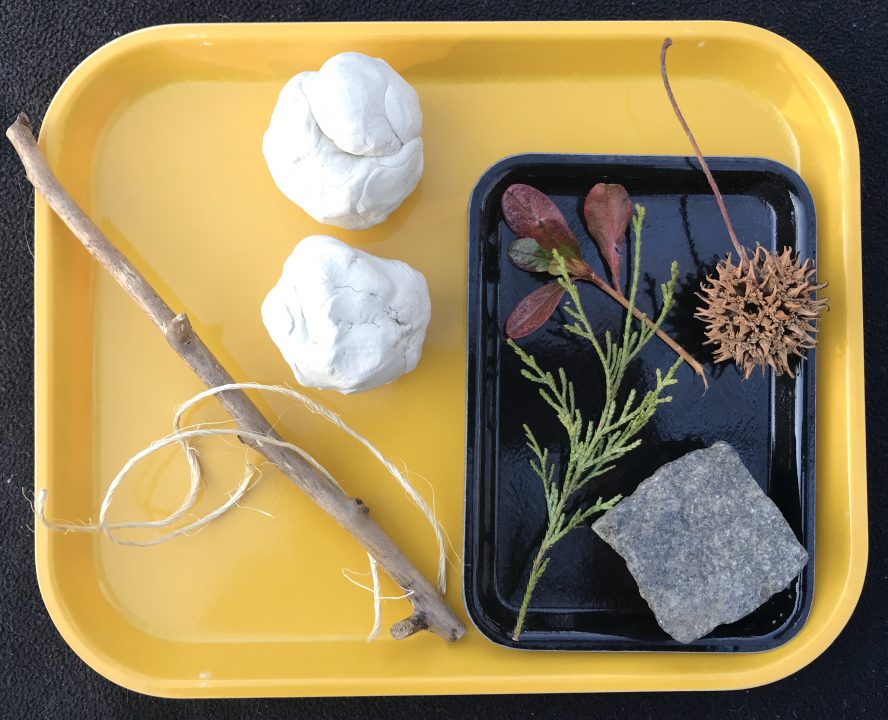
Sometimes finding inspiration is as easy as stepping outside: Take a nature walk and collect treasures! Talk with your child about each object that’s collected. Feel a rock to determine if it’s smooth or bumpy (or maybe even both in different places!). Leaves may be shiny and smooth or soft and textured. Other objects may be sharp, pointy, or knobby.
Combine your finds with a tray (or two), some string, and playdough.
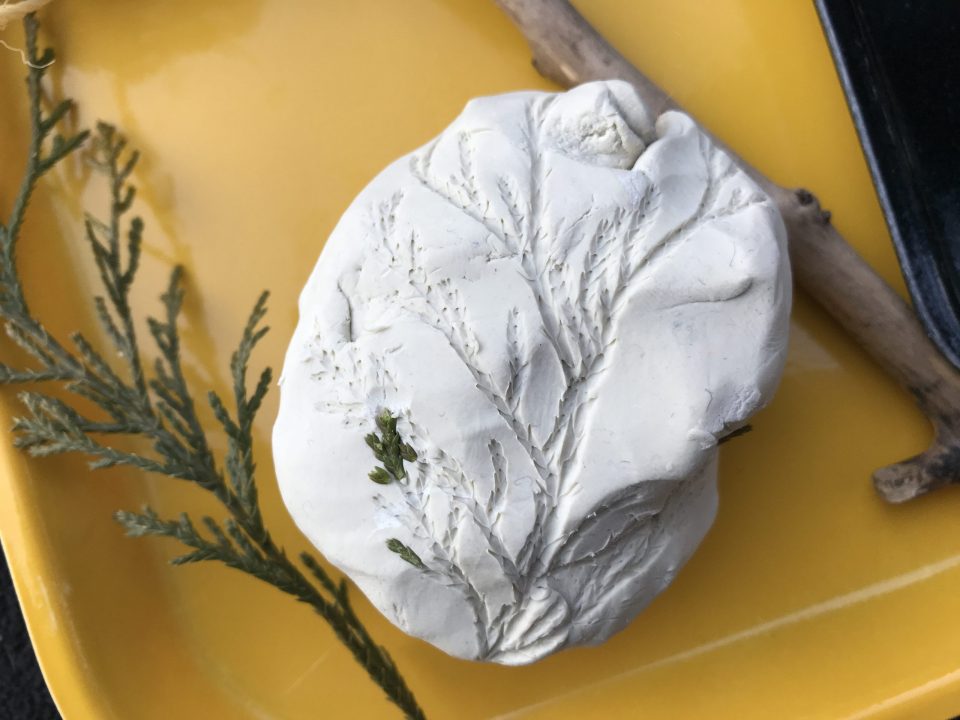
Your child might:
- Collect multiples of the same object and explore arranging or stacking them.
- Collect items with different colors and shapes and create a composition with them.
- Use the textured natural materials to explore making impressions (pictured).
3D structures
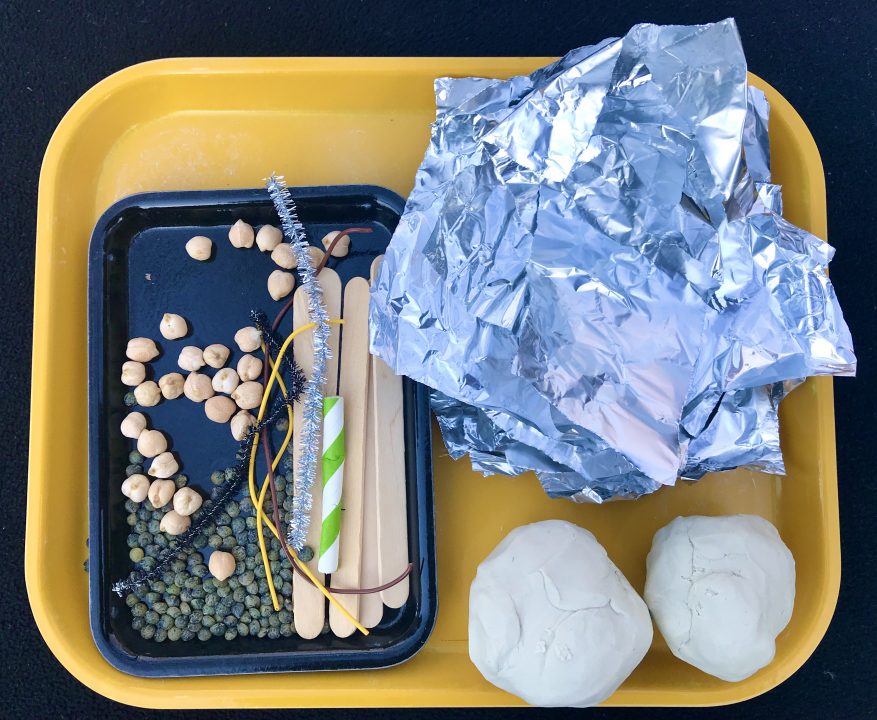
This tinker tray features big structural materials like clay, bendy aluminum foil and rigid popsicle sticks, encouraging 3D creation. For added possibilities, small dry beans and lentils are included.
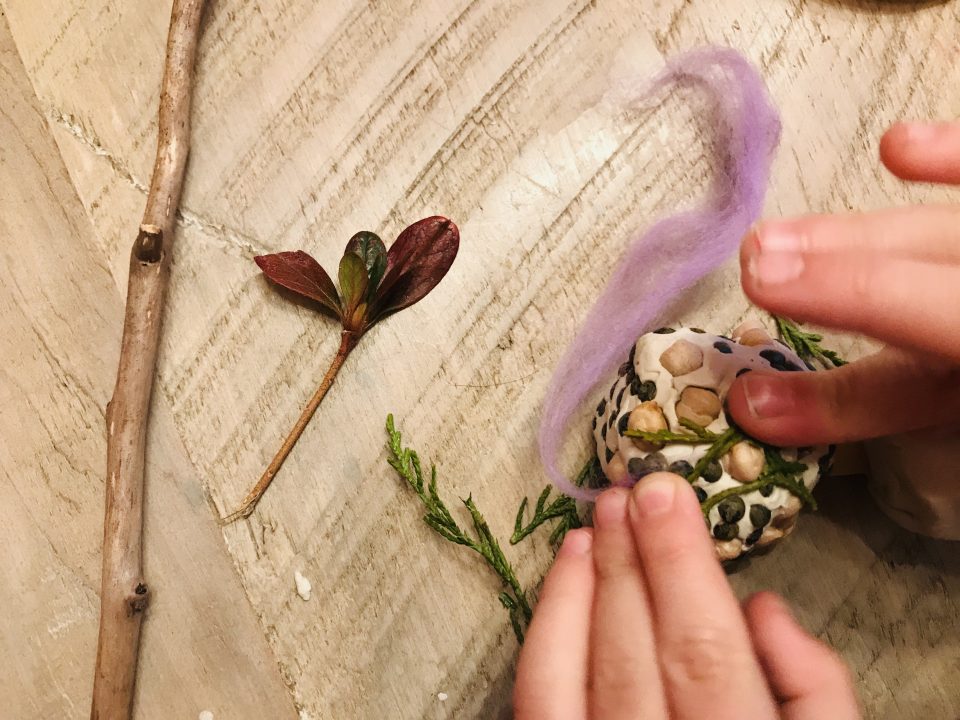
Your child might try some of the following:
- Sticking popsicle sticks through the playdough to create arms, legs, or other body parts.
- Molding the clay or aluminum foil into new shapes: crumpling or tearing the foil; sculpting the clay into new shapes.
- Pressing smaller items into the playdough. The repetitive picking up and placing of small beans is great for developing fine motor skills (pictured).
Did you make a tinker tray? Share on social media @hirshhorn with #HirshhornInsideOut.